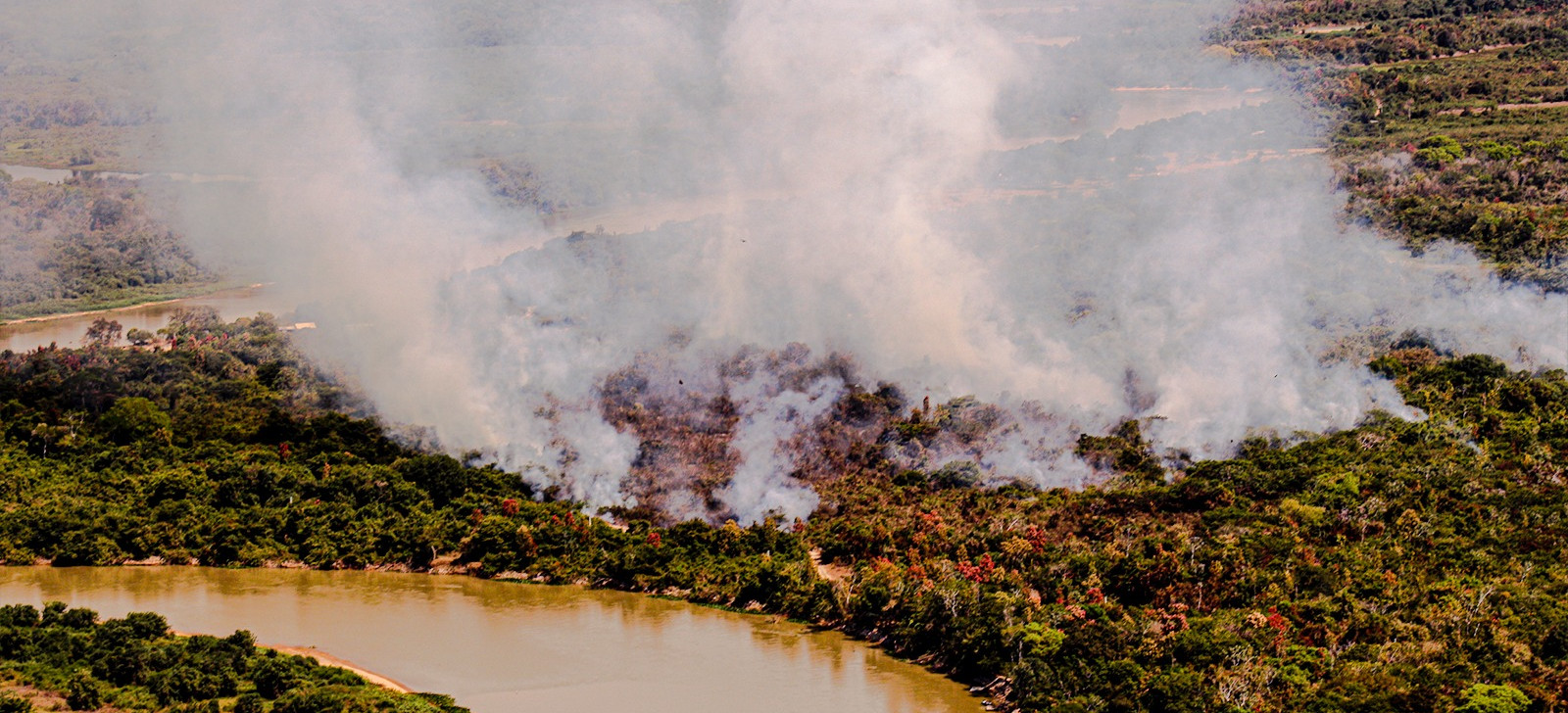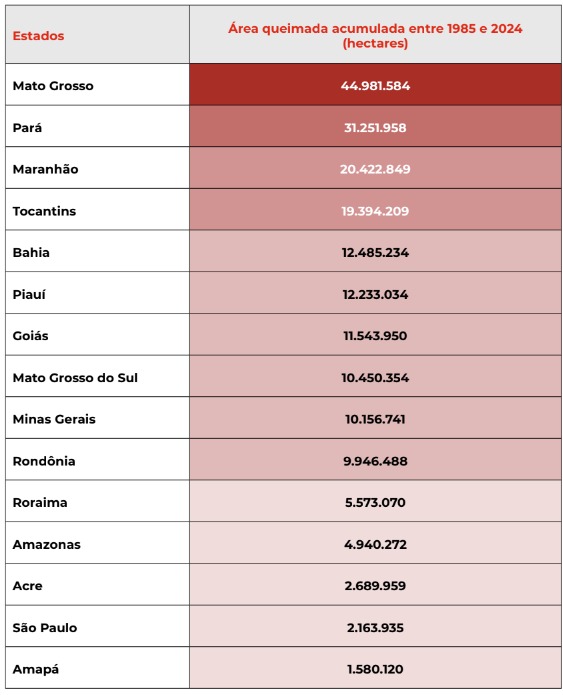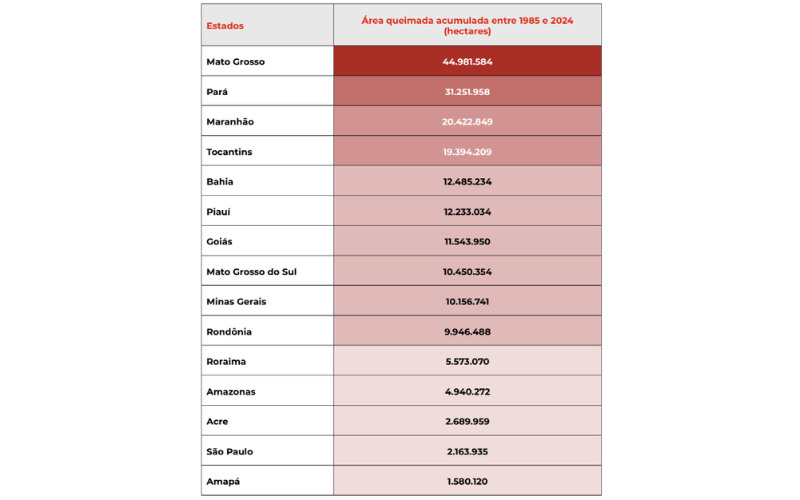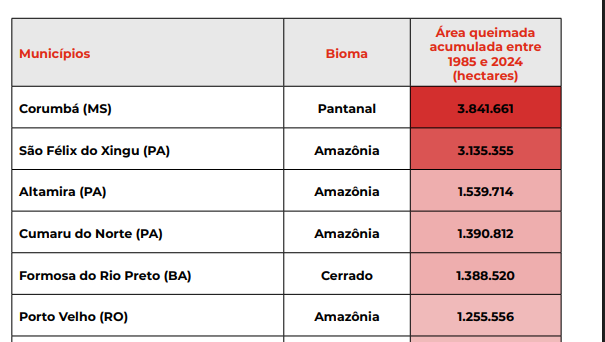Amazon and Cerrado account for 86% of burned areas over four decades
30 de June de 2025

By Lucas Thiago – From Cenarium
MANAUS (AM) – Data from Brazil’s Annual Fire Report show that the Amazon and the Cerrado together account for 177 million hectares burned at least once in the country over the past 40 years. The figures, released this Tuesday, the 24th, indicate that the total corresponds to 86% of all the area affected by fire in Brazil since 1985—45% in the Cerrado and 21% in the Amazon.
The study was coordinated by researchers from IPAM (Amazon Environmental Research Institute) and other institutions that make up the network. As part of the fourth collection of MapBiomas Fire, the report recorded last year the largest area burned in the Amazon within national territory in four decades, totaling 15 million hectares—an 85% increase compared to the previous year.

According to Felipe Martenexen, a researcher at IPAM, even with less deforestation, fire is still widely used in the expansion of the agricultural frontier, contributing to the increase in burnings. He highlights that the states of Mato Grosso, Pará, and Maranhão have led in number of fire outbreaks since 1985. According to him, the problem goes beyond direct forest clearing and is tied to agricultural practices that, combined with extreme weather conditions, sustain a constant cycle of fire.
“Although deforestation has decreased, the use of fire in forest conversion and agricultural management—combined with intensifying adverse climate conditions, such as longer dry periods and rising temperatures—has intensified wildfires, making them more frequent and harder to control, especially in the Amazon. This use of fire, tied to the expansion of the agricultural frontier in the country, has contributed to the high incidence of burnings, particularly in states like Mato Grosso, Pará, and Maranhão—the top three for burnings since 1985,” he emphasized.
See burned areas between 1985 and 2024:

According to the published data, over the past 40 years, nearly half of Brazil’s burned area was concentrated in just three states: Mato Grosso, Pará, and Maranhão. Together, these states account for over 96.6 million hectares burned at least once—equivalent to 47% of the total burned area in the country during the period.

Municipalities
The municipal breakdown reveals a similar scenario. According to the data, 15 municipalities—seven located in the Cerrado, six in the Amazon, and two in the Pantanal—were responsible for 10% of all the burned area in Brazil over the last four decades. Corumbá (MS) and São Félix do Xingu (PA) top the list, including in 2024, and are the only ones to have surpassed the 3 million hectares burned mark each. Together, the 15 municipalities account for 22 million hectares affected by fire since 1985. See:

Another concerning factor is that 69.5% of the fires in Brazil occurred in native vegetation areas, while the remaining 30.5% affected anthropized areas, such as pastures and croplands. In biomes like the Caatinga, Cerrado, Pampa, and Pantanal, about 80% of the burned area corresponds to native ecosystems. The savanna formations typical of the Cerrado were the most burned natural areas during the analysis period.

